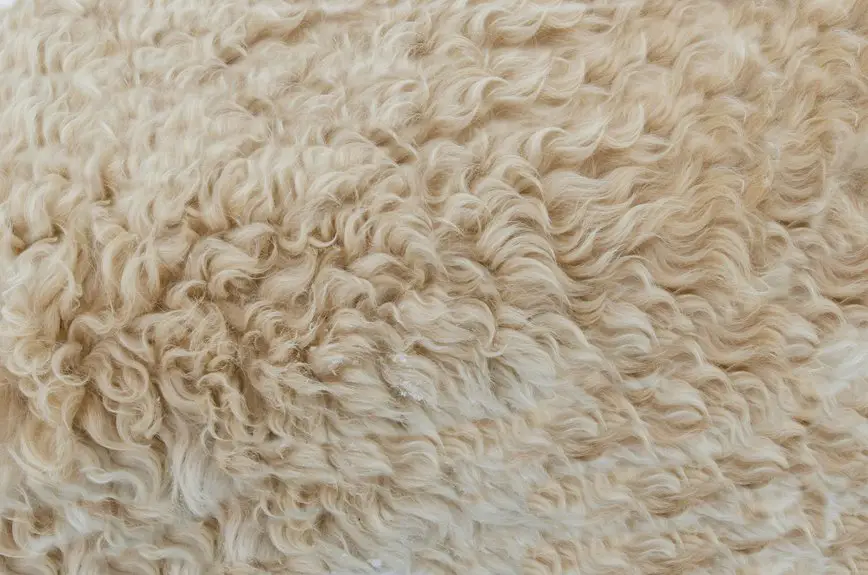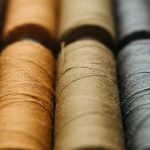You’ll find polypropylene fabric feels crisp and lightweight, combining a smooth yet slightly rough, almost waxy texture that resists moisture and clings less to your skin. It’s durable and holds its shape well, making it comfortable during active use by keeping you dry and preventing irritation. Though a bit stiffer than cotton or polyester, its excellent moisture management and breathability make it perfect for sportswear and more. Discover how its qualities compare to other fabrics and uses next.
Table of Contents
Key Takeaways
- Polypropylene fabric has a smooth yet slightly rough, crisp, and waxy texture that resists moisture effectively.
- It feels lightweight and slightly stiff, maintaining its shape without clinging to the skin.
- The hydrophobic nature keeps the skin dry by repelling water and preventing dampness.
- It offers durability and resists pilling, making it comfortable for activewear and frequent use.
- Compared to natural fabrics, it feels less soft but provides superior moisture management and breathability.
Key Characteristics of Polypropylene Fabric Texture
Polypropylene fabric stands out for its unique texture that combines smoothness with a slight roughness, giving it a distinctive feel. When you touch it, you’ll notice it isn’t as soft as cotton but has a crisp, almost waxy surface that resists moisture.
This fabric feels lightweight and slightly stiff, which helps maintain its shape well. You’ll appreciate how it doesn’t cling to your skin because of its hydrophobic nature, enhancing comfort during active wear.
Its texture also provides excellent breathability, so the fabric feels cool and dry even during extended use. While it’s not plush, the texture offers durability and resistance to pilling, making polypropylene a practical choice when you want a fabric that performs well without sacrificing comfort.
Comparing Polypropylene to Other Common Fabrics
When you compare polypropylene to other common fabrics like cotton, polyester, or nylon, its unique texture and moisture-resistant properties stand out.
You’ll notice these key differences:
- Cotton feels softer and more natural but absorbs moisture, unlike polypropylene.
- Polyester is smooth and durable but doesn’t offer the same lightweight feel as polypropylene.
- Nylon feels silky and strong but can retain moisture more than polypropylene.
- Polypropylene has a slightly rougher texture but excels in resisting water and drying quickly.
Breathability and Moisture Management Features
Breathability plays an essential role in how comfortable a fabric feels against your skin, especially during physical activity.
Polypropylene fabric excels here because it’s hydrophobic, meaning it repels water rather than absorbing it. This characteristic helps keep moisture away from your skin, allowing sweat to evaporate quickly. You won’t feel clammy or weighed down by trapped sweat when wearing polypropylene.
Additionally, its lightweight fibers promote airflow, enhancing ventilation to keep you cool. While it doesn’t absorb moisture, it efficiently transports sweat to the fabric’s surface where it can dry fast.
Lightweight fibers boost airflow, moving sweat to the surface for quick drying and enhanced cooling.
This moisture management feature prevents skin irritation and chafing, making polypropylene a practical choice when comfort tied to breathability matters most. You’ll appreciate how it balances dryness with airflow throughout your activity.
Suitability for Clothing and Activewear
Since you need clothing that moves with you and handles sweat effectively, polypropylene fabric stands out as an ideal choice for activewear. Its lightweight and moisture-wicking properties keep you dry and comfortable during intense workouts.
Plus, it resists odors, so your gear stays fresher longer.
Here’s why polypropylene works well for your active lifestyle:
- Moisture Management: It pulls sweat away from your skin quickly.
- Lightweight: You won’t feel weighed down while exercising.
- Durability: It withstands frequent washing and wear.
- Stretch and Fit: It moves with your body without losing shape.
Choosing polypropylene means your clothing supports performance and comfort, making it perfect for running, cycling, or gym sessions.
Considerations for Upholstery and Home Use
Although polypropylene fabric excels in activewear, it offers unique benefits and challenges for upholstery and home use. You’ll appreciate its stain resistance and durability, making it ideal for high-traffic areas or homes with kids and pets.
Its moisture-wicking properties help prevent mold and mildew, which is great for damp environments. However, polypropylene can feel less breathable and a bit plasticky compared to natural fibers, so it mightn’t provide the cozy softness you want in living spaces.
It’s also prone to static buildup, which can attract dust and pet hair. When using polypropylene for upholstery, consider blending it with other fabrics or adding cushions to improve comfort.
Frequently Asked Questions
Is Polypropylene Fabric Hypoallergenic?
You’ll find polypropylene fabric plays nicely with sensitive skin, rarely causing irritation. It’s often considered hypoallergenic, so you won’t have to worry about unwanted reactions when you wear or use it close to your skin.
How Durable Is Polypropylene Fabric Over Time?
You’ll find polypropylene fabric highly durable over time. It resists wear, moisture, and chemicals, making it perfect for long-lasting use. You won’t worry about it breaking down quickly, even with frequent washing or heavy use.
Can Polypropylene Fabric Be Recycled?
You can recycle polypropylene fabric since it’s a type of plastic (labeled #5). Just check local recycling rules, because not all facilities accept it. Recycling helps reduce waste and supports environmental sustainability efforts.
Does Polypropylene Fabric Retain Odors?
You might find polypropylene fabric holds onto scents a bit more than you’d like, subtly preserving odors after use. But with proper washing, you can easily freshen it up and keep it smelling clean and inviting.
What Is the Environmental Impact of Producing Polypropylene Fabric?
You should know producing polypropylene fabric uses fossil fuels and emits greenhouse gases, impacting the environment. It’s not biodegradable, so waste can persist for years. Recycling helps, but overall, its environmental footprint is significant.
- Tetron Fabric for Marine Applications: Durability and Use Cases - June 18, 2025
- Tetron Fabric for Outdoor Furniture: Weather Resistance and Care - June 18, 2025
- Tetron Fabric for Wall Coverings: Style and Application Tips - June 18, 2025







